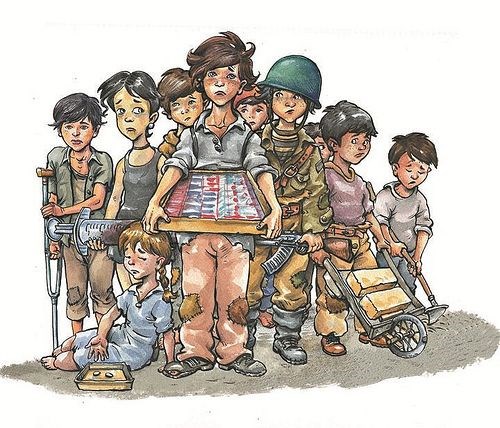
19-Jul-2025 , Updated on 7/20/2025 10:43:31 PM
Child Labor in Developing Countries
Poverty and Survival Necessity
Severe poverty in developing countries often causes child labor, as families are forced to make hard survival decisions. Without sufficient social nets, the families tend to rely on the earnings of the children to obtain basic needs such as food and shelter. This financial need commits children to work on many occasions under unsafe or exploitative conditions to enable their families to survive. Child labor is a direct correlation to the basic need to survive of millions of people who are stuck in poverty. This can address this by addressing systemic poverty.
Education Denied, Futures Stolen
Even the basic right of children to education is snatched away by child labor in the developing world. This impedes access to literacy, numeracy and acquisition of other attending skills in the classrooms. As a result, personal potential is dead, and children are caught in an exploitative industry and continue living in poverty. The social burden is heavy because countries lose the future benefits of an educated work force that is needed to develop them. Putting an end to child labor that exploits children by paying low wages is not negotiable and it entails strict law enforcement, provision of good schooling and solving the cause of poverty by the family. The result of stolen childhood comes in the form of a stolen national future.
Physical and Psychological Harm Endured
Child labor in developing countries causes excruciating and long-lasting physical and psychological harm. Physically, children are subjected to unsafe exposure to chemicals and other dangerous machinery as well as to extreme conditions, which end up causing injuries, chronic pain, respiratory diseases and even irreversible stunt growth. Forced labor, abuse, and fear all the time, psychologically open the doors to anxiety, depression, and post-traumatic stress disorder (PTSD). Denial of childhood involvement or growth experiences essentially derails development, leaving permanent emotional scars and an all-pervasive sense of hopelessness, whose effects can be felt far beyond the end of work. This damage is also one of the basic violations of the rights and health of children.
Exploitative Industries and Weak Laws
Exploitive industries that operate under poor laws essentially keep child labor alive because the legal loopholes provide safety nets to the corporate business. Such industries as agriculture, manufacturing, mining, and informal services are based on the harmful use of child labor, which is supplied cheaply and vulnerable. The industries are purposely working in a setting where labor laws are weak or badly implemented. Lack of checks and minimal sanctions when chastisements are made makes industries free to exploit children. Exploitative industries are located directly by weak laws and keep children entering the dangerous work.
Investing in Education, Empowering Communities
The key to the fight against child labor is the mass investment in the affordability and quality of education. This is the main prevention method and the way out. Education gives skills and knowledge to children to offer alternatives to exploitative labor and end the intergenerational chain of poverty that creates it. Affordability, proximity, safety, and relevancy of schools ensure children do not drop out of schools. Moreover, the educated populations develop the ability to appreciate the rights of children, seek protective laws, insist on their implementation and also establish a lasting local economy that does not rely on child labor. Child labor can end only after people are empowered at community levels through education.

Content Writer
Hi, I’m Meet Patel, a B.Com graduate and passionate content writer skilled in crafting engaging, impactful content for blogs, social media, and marketing.
Join Our Newsletter
Subscribe to our newsletter to receive emails about new views posts, releases and updates.
Copyright 2010 - 2026 MindStick Software Pvt. Ltd. All Rights Reserved Privacy Policy | Terms & Conditions | Cookie Policy